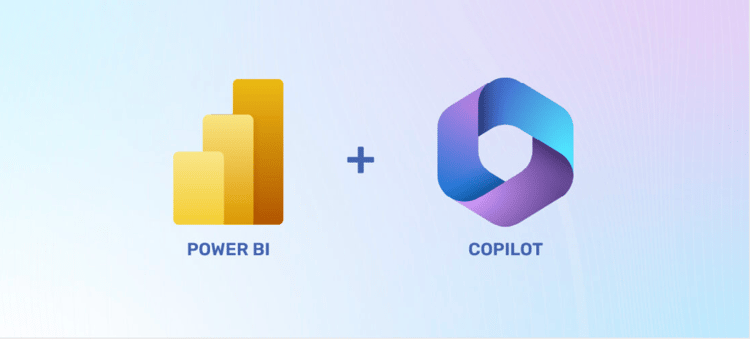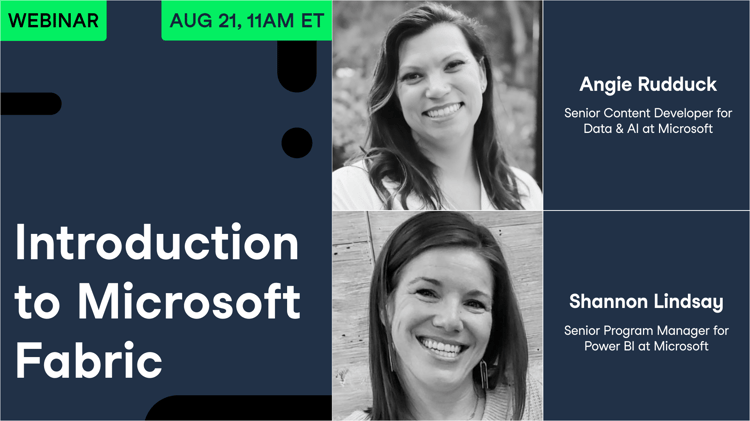Microsoft Fabric is Microsoft and Azure Data’s new unified data analytics platform, responsible for gathering a range of data toolsets (some of which already exist in the Azure product set) under a single umbrella. Think of it as a single solution to crunch numbers and deliver insights.
The goal of Microsoft Fabric is to enable business and data professionals to unlock the potential of their data for the era of Artificial intelligence. Fabric has been revolutionizing the way data is interpreted and has been making analytics accessible to everyone – not just data science whizzes.
In this article, we will demystify Microsoft Fabric further, delving into its core features, including OneLake, and the different workloads available on the platform. By the end of the article, you’ll have an up-to-date insight on what Fabric is and why it’s beneficial.
Get certified in your dream Data Analyst role
Our certification programs help you stand out and prove your skills are job-ready to potential employers.
What is Microsoft Fabric?
Microsoft Fabric is an all-in-one analytics platform created for businesses and data professionals. The platform handles everything from data science and real-time analytics to data storage and data migration. It's a cohesive platform combining various tools and technologies into a single solution.
The best way to conceptualize Fabric is to understand its purpose: simplicity. With the tool, organizations can combine data from several sources into a single environment. This simplicity allows data professionals to focus on results rather than the technology they use. It also means data teams don’t have to spend hours distinguishing how the licensing for Synapse, Azure Data Factory, and Power BI will interact with one another.
Microsoft Fabric Features
There are five key areas the Microsoft team have defined as the differentiators between Fabric and the rest of the market. Those areas include:
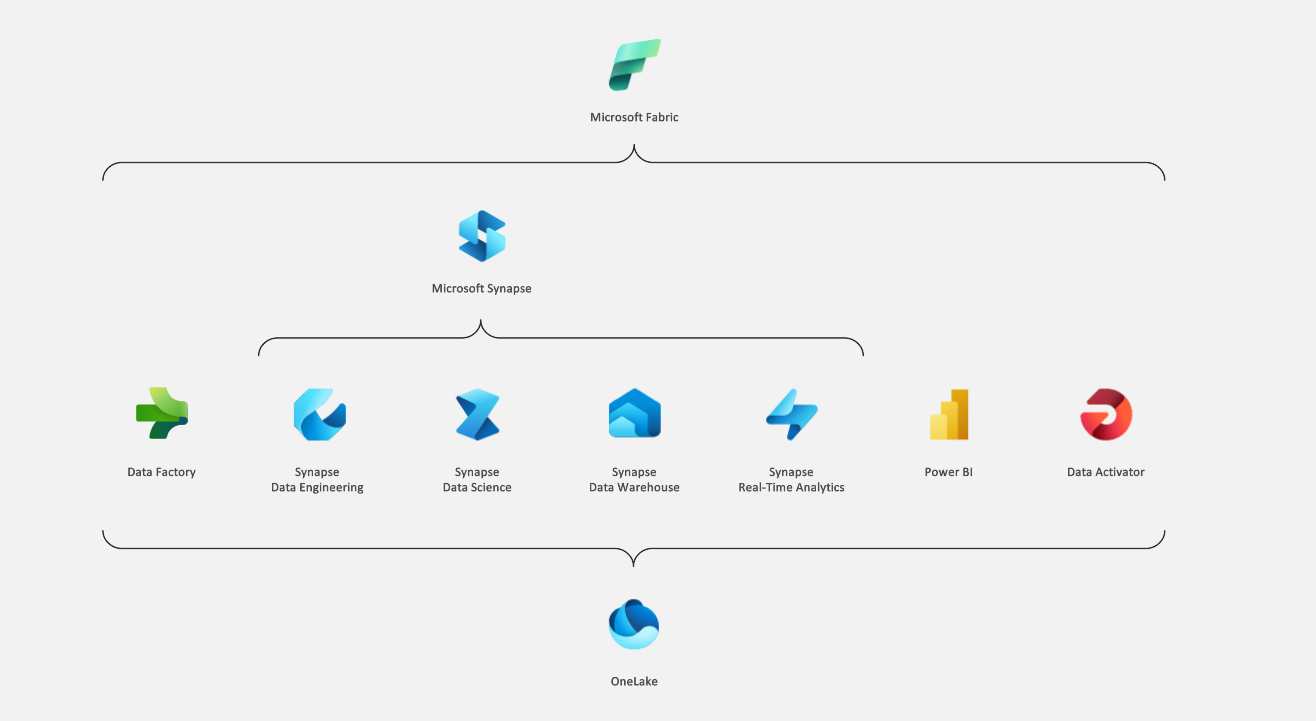
An overview of Microsoft Fabric
#1 A complete analytics platform
Each analytics project depends on several supporting systems. These supporting systems often have a unique set of requirements and often require input from several other vendors. Integrating the different products of these vendors can be a difficult, fragile, and expensive task.
Here’s where Microsoft Fabric comes into play.
Microsoft Fabric alleviates this problem by providing teams with a single solution that offers a uniform user interface, architecture, and a variety of other tools necessary for insights to be extracted from data and presented.
#2 Lake-centric and open
Data lakes are often messy and complex, which makes building, integrating, and managing them an extremely challenging endeavor. There’s also the issue of data duplication and vendor lock-in that arises once the data lake is operational; this stems from using multiple data products that employ various proprietary data formats on the same data lake.
Fabric solves this problem by introducing a built-in software as a service (SaaS), multi-cloud data lake called “OneLake.” Similarly to how all Microsoft 365 applications are automatically hooked into OneDrive, the entirety of Fabric’s workloads are wired into OneLake.
The built-in integration of OneLake helps to remove ubiquitous and disorganized data silos, which arise when team members configure their own segregated storage accounts. OneLake offers the entire team a single, unified storage unit that makes discovering and sharing data simple.
#3 Artificial intelligence
Azure’s OpenAI service is integrated into Microsoft Fabric at every layer to help users unlock the full potential of their data. This integration also enables developers to apply the power of generative AI to customer data and help business users on their quest to discover insights in data.
Since Copilot is integrated into every Microsoft Fabric data experience, users can utilize conversational language to:
- Build machine learning models
- Develop dataflows and data pipelines
- Generate code and entire functions
- Visualize results
It’s even possible for users to create their own custom conversational language experiences that combine their data with Azure OpenAI Service models and then publish them as plug-ins.
#4 Empowerment for all business users
Teams within an organization aspire to drive a data-driven culture when everyone is empowered to make better decisions using data. Microsoft Fabric helps to foster this culture by making analytics accessible to all. More specifically, Fabric is deeply integrated with the typical, everyday Microsoft 365 applications. This makes it possible to convert your Microsoft 365 applications into a focal point for uncovering and applying insights.
#5 Cost reduction through unified capacities
When various products from multiple vendors are combined in a single project, there’s typically significant wastage. This is due to computing capacity being provisioned in multiple systems, such as data engineering, data warehousing, and business intelligence. The moment one of these systems is idle, its capacity cannot be utilized by another system, which means resources are being wasted.
Fabric alleviates this problem by reducing the complexity of purchasing and managing resources. With Fabric, it’s possible to purchase a single pool of compute to power all workloads (e.g., data integration, data science, etc.). This all-inclusive model significantly reduces costs since any unused compute resources in a workload may be utilized by any of the workloads.
OneLake: The Heart of Fabric
At the heart of Microsoft Fabric lies OneLake. OneLake is effectively where all data utilized within Fabric is stored. As the name suggests, OneLake is a single, unified, logical data lake that’s responsible for supporting all of your Fabric workloads.
A common comparison is often drawn between OneLake and OneDrive. For example, here’s what Microsoft said, “Similar to how Office stores Word, Excel, and PowerPoint files in OneDrive, Fabric stores lakehouses, warehouses, and other items in OneLake.” This has often led many to adopt the analogy that OneLake is to data what OneDrive is to files.
Prior to the arrival of OneLake, organizations would typically create multiple lakes for different teams instead of collaborating on a single data lake, regardless of whether this meant managing extra resources. OneLake was introduced to remove these challenges by breaking down data silos and improving collaboration by simplifying the management of organizational data.
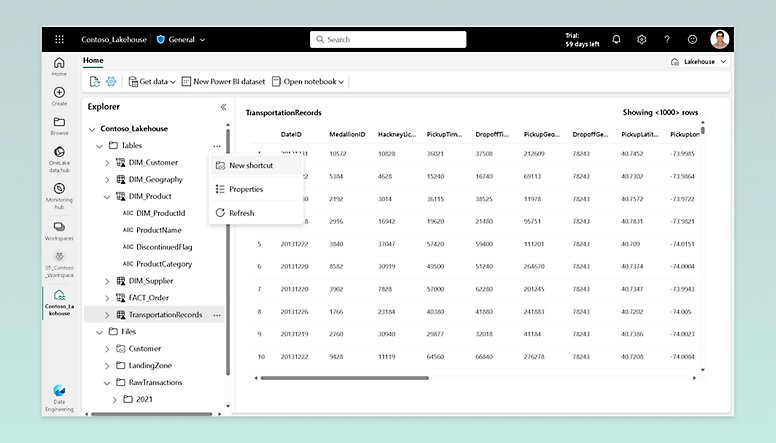
Microsoft OneLake in action - Image Source
The key features include:
Shortcuts
The shortcut feature enables users to combine data across different business groups and domains into their virtual data product. This means organizations can easily share data between different users and applications without the need to move or duplicate information unnecessarily. The term “shortcut” refers to data stored in further file locations, which may be within the same workspace or across different ones. Regardless of the location, the shortcut reference makes files and folders appear as if they’re stored locally.
Openness
Microsoft’s Azure Data Lake Storage (ADLS) Gen2 is a suite of features for big data analytics that’s built on top of Azure Blob storage. As well as offering massive storage, ADLS Gen2 accepts both structured and unstructured data types. This information is useful since OneLake is built on top of ADLS Gen2, which makes it open at every level.
OneLake is also compatible with existing ADLS Gen2 applications, such as Azure Databricks, since it supports the same ADLS Gen2 APIs and SDKs. Therefore, expertise with Microsoft Fabric is not required to access the underlying data; users may address data in OneLake as though it were a massive ADLS storage account for the entire organization.
One copy of data
With OneLake, the process of copying data so it may be used with another engine or breaking down silos to enable the data to be analyzed with other data is obsolete. It’s no longer required. According to OneLake’s documentation, “OneLake aims to give you the most value possible out of a single copy of data without data movement or duplication.”
Governance by default
One of the unique benefits of SaaS services are the concept of tenants. A tenant defines a group of customers that share common access and specific privileges to a software instance. The OneLake documentation states, "Knowing where a customer’s organization begins and ends provides a natural governance and compliance boundary, which is ultimately under the control of a tenant admin.” Essentially, all data that lands in OneLake is governed by default.
Fabric Workloads and User Experiences
Microsoft Fabric comes with several workloads, each of which are developed with specific personas in mind, that are automatically wired into OneLake to deliver each user a unique platform experience.
These workloads include:
Data factory
The data factory offers in excess of 150 connectors to cloud and on-premise data sources, the ability to orchestrate data pipelines, and drag-and-drop experiences for data transformation.
Synapse data engineering
The data engineering workload has cool features that work within Fabric, such as Lakehouse. A Lakehouse artifact exists within its own workspace and enables what Microsoft describes as “great authoring experiences” using the Spark engine. There are also other cool benefits, such as instant start with live pools and the ability to collaborate.
Synapse data warehouse
The data warehouse workload provides data engineers and analysts with a converged Lakehouse and data warehouse experience. Behind the warehouse is their industry-leading (on open data formats), unified, serverless, and dedicated SQL engine.
Synapse real-time analytics
The real-time analytics workload enables developers to stream data from Internet of Things (IoT) devices, telemetry, logs, and more. They’re also able to analyze large volumes of semi-structured data with high performance and low latency since Kusto Query Langauge (KQL) is at its foundation.
Synapse data science
The Data Science workload enables users to work through the entire end-to-end data science process. It does so by offering data scientists a variety of tools required to build sophisticated AI models, collaborate on projects, and train, deploy, and manage machine learning models.
Data Activator
Data Activator is an intuitive, no-code interface within Microsoft Fabric, designed to autonomously initiate actions in response to identified patterns or specific conditions in evolving data.
Business Intelligence (Power BI)
Sitting at the heart of Fabric's business intelligence workload is Microsoft’s industry-leading and AI-driven analytics service, Power BI. This enables business analysts and other users to discover insights within organizational data. It’s also deeply integrated with Microsoft 365, which means organizations can gain relevant insights directly from any of the 365 products.
Become a Power BI Data Analyst
Master the world's most popular business intelligence tool.
Conclusion
Microsoft Fabric is a game-changing platform that brings together a variety of Azure tools and services under one unified umbrella.
Its core features, such as OneLake and its various workloads, empower businesses and data professionals to make smarter, data-driven decisions. Whether you're a seasoned data scientist or a business analyst looking to harness the power of data, Microsoft Fabric offers a comprehensive solution that simplifies complex data tasks.
One of the key integrations in Microsoft Fabric is with Power BI, Microsoft's industry-leading analytics service. If you want to dive deeper into data analytics and visualization, check out our Power BI Fundamentals skill track. This track will equip you with the skills you need to turn raw data into meaningful insights, a skill that complements the capabilities of Microsoft Fabric perfectly.

